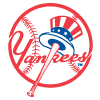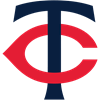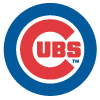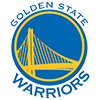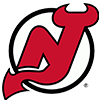-----Original Message-----
From: "Christopher Liss"
Sent: Friday, March 7, 2014 8:56pm
To: "Jeff Erickson"
Subject: Charging the Mound
A central theme in our baseball discussions both on-air and in our videos (see above) is the extent to which pitching is improperly valued by the traditional 70/30 dollar-value split. Building on the work of Peter Kreutzer and Eno Sarris, I surmised that to apportion only 30 percent of the total budget ($260 * 12 teams = $3120 *0.3 = $936) toward pitching short-changed the elite starters. When you consider that in a standard 5 x 5 league half of your standings points come from pitching categories, it's odd you'd be spending more than two-thirds of your money (or draft-slot value) on something that's worth only 50 percent of the result.
Now this could make sense in some instances. For NFL drafts no one spends anything but a late-round pick on kickers and defenses, and it's not because those positions are unimportant. If you could guarantee me the top defense, I'd probably spend a third-round pick on it, and maybe a fourth for the top kicker.
Their problem is not lack of value but unreliability: The consensus top-ranked fantasy defense has an excellent chance to finish outside the top-10. Same with the kicker. So the best argument for spending far less on pitchers than the 50 percent they contribute to your standings is they are less reliable. And on the whole that might be the case. Pitchers are more volatile generally, and there are more cheap pitchers on the waiver wire who end up contributing to your league's lineups - what Peter Kreutzer calls "free loot." In fact, there's typically twice as much free loot for pitching as for hitting.
But just because pitching is less reliable generally doesn't make that true for all classes of pitchers - at least not over the last few seasons. Consider last year for example.
Top-15 hitters and pitchers by ADP:
| Player | ADP | OV ADP | IP | Ks | Player | Pos | ADP | AB | HR |
|---|---|---|---|---|---|---|---|---|---|
| Stephen Strasburg | 1 | 13 | 183 | 191 | Miguel Cabrera | 3B | 1 | 555 | 44 |
| Justin Verlander | 2 | 15 | 218 | 217 | Mike Trout | OF | 2 | 589 | 27 |
| Clayton Kershaw | 3 | 17 | 236 | 232 | Ryan Braun | OF | 3 | 225 | 9 |
| David Price | 4 | 29 | 187 | 151 | Robinson Cano | 2B | 4 | 605 | 27 |
| Felix Hernandez | 5 | 37 | 204 | 216 | Matt Kemp | OF | 5 | 263 | 6 |
| Cole Hamels | 6 | 41 | 220 | 202 | Andrew McCutchen | OF | 6 | 583 | 21 |
| Matt Cain | 7 | 44 | 184 | 158 | Albert Pujols | 1B | 7 | 391 | 17 |
| Cliff Lee | 8 | 48 | 223 | 222 | Joey Votto | 1B | 8 | 581 | 24 |
| Gio Gonzalez | 9 | 52 | 196 | 192 | Carlos Gonzalez | OF | 9 | 391 | 26 |
| Jered Weaver | 10 | 53 | 154 | 117 | Prince Fielder | 1B | 10 | 624 | 25 |
| Yu Darvish | 11 | 56 | 210 | 277 | Giancarlo Stanton | OF | 11 | 425 | 24 |
| Zack Greinke | 12 | 59 | 178 | 148 | Josh Hamilton | OF | 12 | 576 | 21 |
| Madison Bumgarner | 13 | 60 | 201 | 199 | Troy Tulowitzki | SS | 14 | 446 | 25 |
| Adam Wainwright | 14 | 65 | 242 | 219 | Buster Posey | C | 16 | 520 | 15 |
| Chris Sale | 15 | 67 | 214 | 226 | Jose Bautista | OF | 18 | 452 | 28 |
| AVG | 43.7 | 203.3 | 197.8 | AVG | 8.4 | 481.7 | 22.6 |
Now admittedly I used top-15 instead of top-10 for pitchers because it makes a stronger case, and homers and Ks are not the only categories that count. But you can see top-15 pitchers last year averaged 203 IP and 198 Ks, while top-15 hitters averaged 482 at-bats and 23 HR. Moreover, the hitters cost quite a bit more (average ADP 8.4 vs. 43.7). And the homers aren't significantly weighed down by speed-only guys - the lightest power guys in the top-15 last year were probably Andrew McCutchen, Buster Posey and Joey Votto.
One season is not a big enough sample, and the pitchers look worse if we use only the top-10, but generally pitchers have been more reliable than they used to the last several years - Verlander, Hernandez, Kershaw, Lee, Cain and Hamels have been staples in the top-10. Moreover, many of the busts like C.C. Sabathia, Adam Wainwright (injured over the winter in 2011), Tim Lincecum and Roy Halladay gave us some warning before falling irretrievably off the cliff.
Even if we don't want to put elite pitchers completely on par with hitters due to slightly elevated risk and more volatility in the stats that count for pitchers (wins are highly team and luck dependent, as is ERA to a lesser extent), if you were to split the dollars 55/45 in favor of hitting or even 60/40 for the top hurlers, Kershaw is going to join Trout and Cabrera in a clear top-tier, Darvish is going to be in the top half of the first round, and other pitchers like Strasburg and Lee are going to go late in the first, too.
If that's true - and please feel free to argue it isn't - you should be able to profit from buying top starters at the going 70/30 rate for their stats.
The other topic with which I've been obsessed of late is one I initially wrote about a few years ago: whether projections are necessary for drafting a team. I've softened my stance a little since then, mostly because my mastery of the player pool isn't as good as it needs to be to avoid projections altogether, i.e., it's a crutch worth using when you don't have a good read on a player.
But even if we grant projections are a useful tool, it's important not to be misled. When you buy Billy Hamilton, you're not really buying 75 steals - you're buying Hamilton's skills which he'll apply to the game of baseball, and the opposition and official scorers will translate those to the stats you get for your fantasy team. While that's obvious, it's not a trivial point as it's easy to get lost in a series of fictional numbers and lose sight of the reality. You see examples of this all the time when analysts say things like: "I'm not paying second round prices until he's done it." That's confusing last year's stats (mere indicators of this year's skills) with something that benefits you this season. The reality is no one's done it for 2014, and even if your projection has a basis in last year's final numbers, it has nothing to do with what's transpiring on the field this year.
-----Original Message-----
From: "Jeff Erickson"
Sent: Sunday, March 9, 2014 9:44am
To: "Christopher Liss"
Subject: Re: Charging the Mound
As you know from our discussions, I agree with the conclusion that elite starting pitching is undervalued. I spent a little bandwidth discussing the concept as part of my draft primer for the magazine, but I didn't take it to the full conclusion you did. But I wonder, can you accomplish the goal of taking profit out of the elite tier without drastically altering your hitter/pitcher split? I wonder if you can't accomplish it by going with a more traditional (as in, the standard that we used in the 90's) 65-35 split, or even 67-33? Larry Schechter's book demonstrates how much of a difference just a couple of percentage points makes in changing that split, and in a league with tight values among experienced players, that might be all you need to land a couple of pitchers in that top tier, especially if you're agnostic about which two you land.
And I think that it's important to have that sort of moderation in your splits. Unless multiple players in your league are also making that adjustment, it's going to be tough to fill in all of your hitting slots adequately, or to get what you need from the closer spot. Punting closers is one way to adapt (and a whopping four teams did that in NL LABR, though not to chase starters, but to chase hitting), but it's also viable to avoid that vast middle among starting pitchers. In such a plan, you could buy two elite starters (like you did in AL LABR), but instead of getting a couple of $8-10 starters, buy one elite closer, and then back-fill with $1-$4 pitchers to fill out your staff. Of course, in Tout and in other leagues when you can stream your starting pitchers better than you can in LABR, this plan is more attainable.
Then again, maybe that's the point of really being aggressive with your splits - if you can build up such a buffer in the rate stats, it'll give you greater flexibility to trade midseason. It just requires that you be the aggressor in the trade market (never a problem for you), and that the market is active enough (sometimes a problem in LABR).
As for the second topic, of course you're right. The reason why we focus on the "has he done it before?" question is job security. Once you've had a big season in the majors, you get a lot more latitude from your team to work through slumps. Hamilton's volatility stems from whether he could get sent down in May, not whether he can steal 75 bases in a full season. Every player has a risk component, but I think that you'd agree that job security varies from player to player.
Hamilton is an extreme example, though. Had he hit .295 at Louisville last year, he'd be a second-round pick this year. As it stands, he's going anywhere from the third to the seventh in the leagues I'm seeing. I don't have him anywhere yet, but I'm getting the itch. He falls in that "fun to own" class of player - I know that we want to be cold-eyed analysts to win our leagues, but hopefully we all got into fantasy because we love baseball to begin with. Sometimes, only sometimes, I'll let that sentiment help shape my draft decisions. I think that possibility with Hamilton will come to fruition at some point this year.
-----Original Message-----
From: "Christopher Liss"
Sent: Sunday, March 9, 2014 4:26pm
To: "Jeff Erickson"
Subject: Re: Charging the Mound
I think you can still capitalize on the pitching profit both in mixed leagues and LABR - even if no one else is pricing up pitchers along with you. Because if the elite starters are really that mispriced, then each one is a $10-plus bargain. If you draft three of them in rounds 2-4 in NFBC, for example, that's $30 of profit in those rounds, so to speak. Others will also get that profit on the 1-2 they draft, but it's still to your advantage to get three, while others get hitters simply at retail.
In LABR, it's the same thing. While I thought I couldn't afford to buy three, maybe I should have rather than buying Jarrod Parker, John Lackey and Justin Masterson for a total for $30.
But those guys were also underpriced even with the $70/$30 split according to my numbers by about $10 collectively. And even with the two top starters, I've got $20 in profit right there (assuming my hypothesis is correct). While others who bought Yu Darvish or Chris Sale might reap similar profits, no one else bought two elite guys.
The basic calculation is starting with the standard $180/$80 split (which is roughly 70/30), how many more points do you gain for every extra dollar you spend on pitching, especially the elite starters. If every extra $1 spent on elite starters gets you more standings points than you lose by not spending it on hitting, you should keep buying elite pitching until that's no longer the case. I wound up at $96/$164.
I don't think the "has he done it before" question is only related to job security. It's also the basis upon which people are taking Adam Jones over Bryce Harper. They see Jones' consistent results and assume that makes him safer for 2014 than Harper rather than simply evaluating their respective skills, health and team context.
-----Original Message-----
From: "Jeff Erickson"
Sent: Monday, March 10, 2014 4:42pm
To: "Christopher Liss"
Subject: Re: Charging the Mound
I think you're right that the best question is "how much do you spend on elite pitching?", not "how much do you spend on pitching?" I get it that you would probably have to expand your overall pitching budget, but I think you might be right to get that third elite guy, ignore that middle tier, and also ignore the shaky closer class ($10 Tommy Hunter, for example, for your team, as that class generally provides poor returns), and then fill in with cheap options at the end, and still spend just $85-90 to accomplish it. If as a class the middle tiers of pitching provide negative returns, then treat it as a class rather than try to pinpoint which ones in that class are the best options.
That raises the question whether you are better than your competition in buying from that class. Maybe that's your specialty, and you have a better eye for pricing those pitchers, but my guess is that, at least in the circles we usually run, we're competing with equally aware and insightful players, and that we'll tend to push the price on the same guys in those middle tiers. I know that you've had a pretty vigorous Twitter debate on the topic today, touching specifically on whether we find different or similar sleepers as a class. I lean towards the group-think model - we all tend to be convinced by the same metrics and indicators (velocity, K/9IP, ballpark, pedigree, etc...), rarely having a secret sauce element that nobody else has. Maybe in my home leagues that's different, but I doubt it, and it's almost certainly true in industry leagues and in the NFBC.
All of this points towards strategy and not player evaluation being our edge. If that's true, then the next logical step is to make the model as extreme as it can be workable - thus, three elites rather than one or even two.











